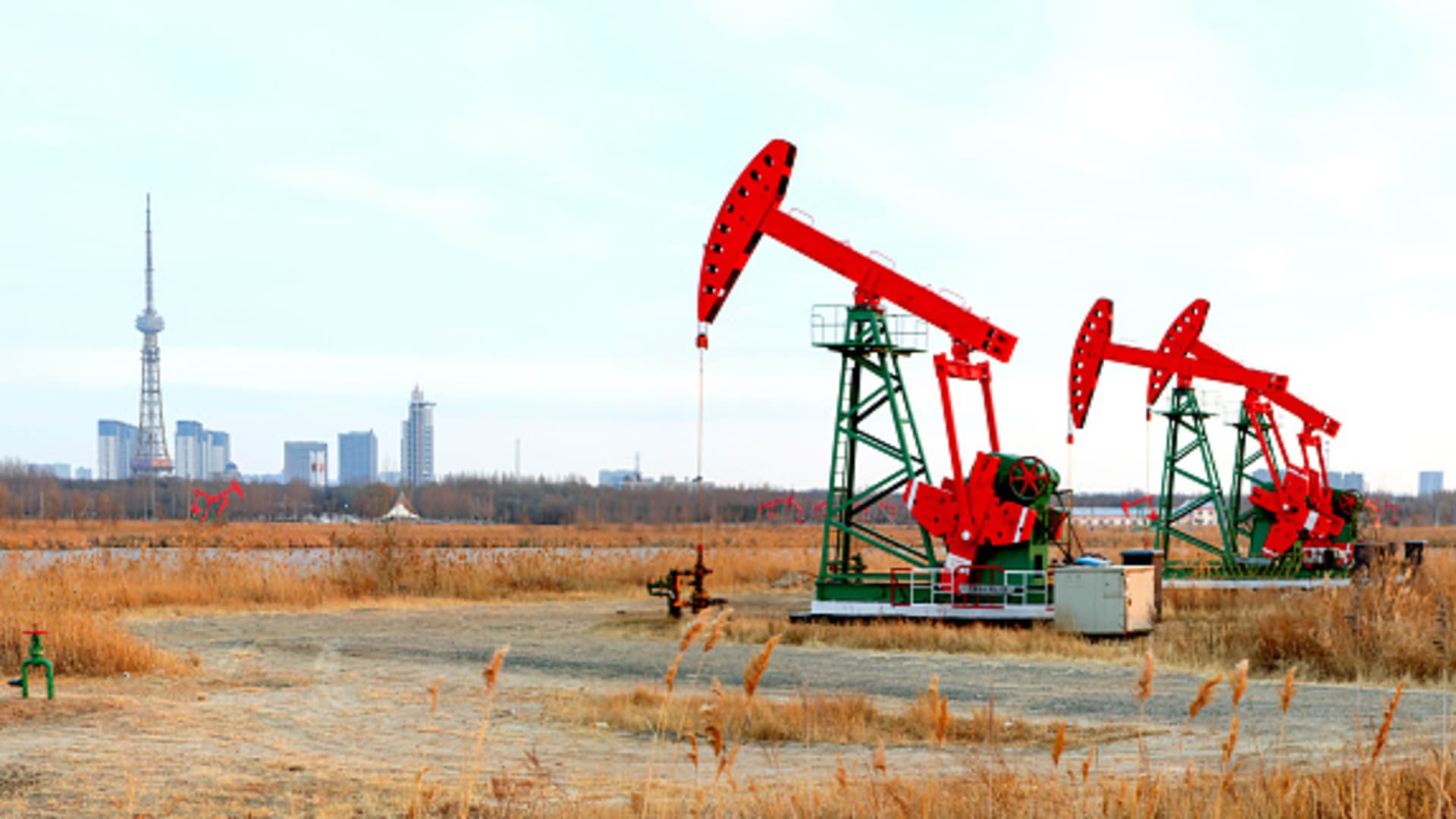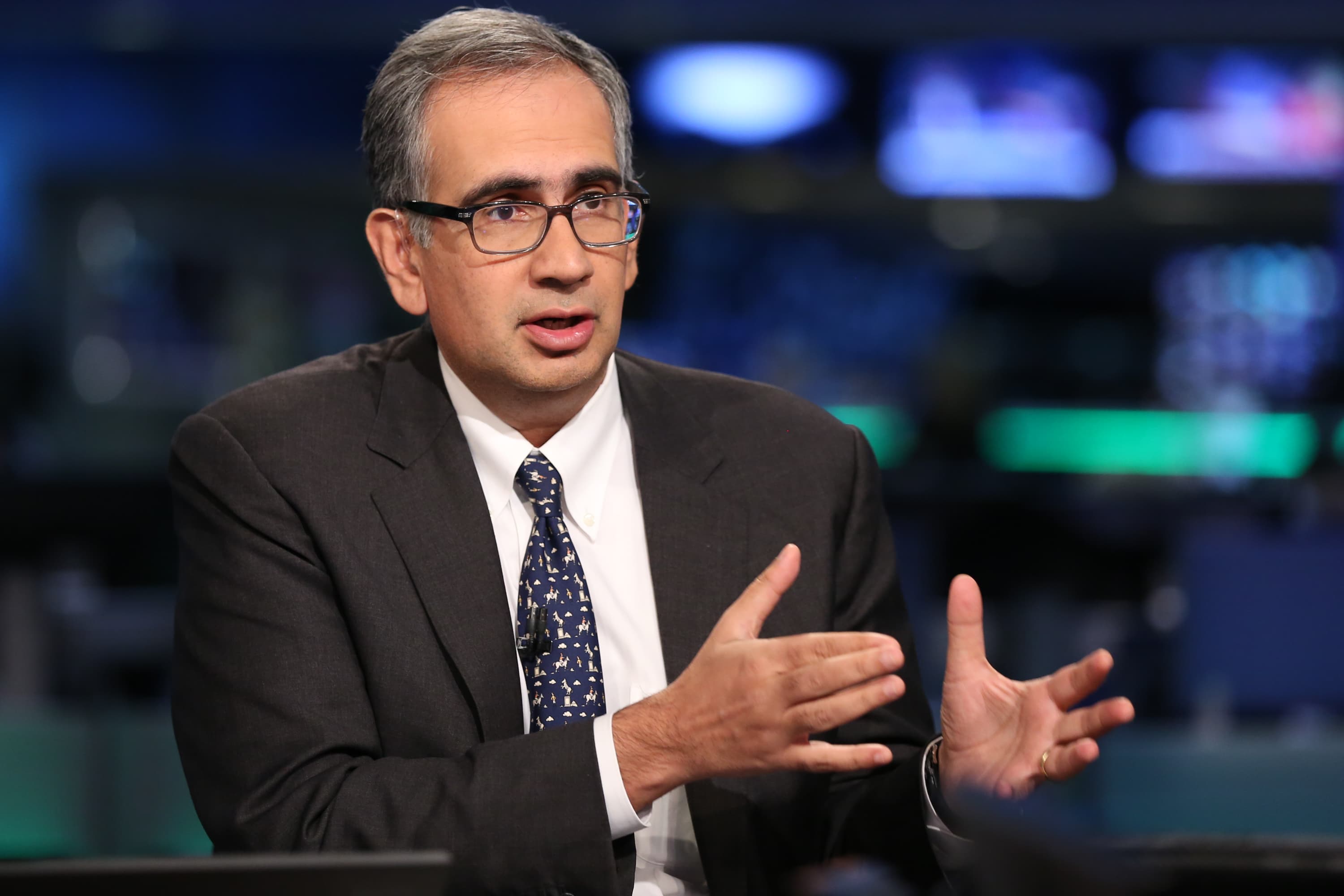A group of some of the world’s most powerful oil producers is highly likely to take further measures to stem a price decline and try to balance the market, according to Goldman Sachs.
OPEC and non-OPEC producers, an influential energy alliance known as OPEC+, will convene in Vienna, Austria on Dec. 4 to decide on the next phase of production policy.
related investing news
It comes amid recession fears, weakening crude demand in China from renewed Covid-19 lockdowns and as market participants assess the looming impact of a Western price cap on Russian oil.
Jeff Currie, global head of commodities at Goldman Sachs, said Tuesday that a combination of factors had led the bank to downgrade its oil price forecasts in recent months.
“First and foremost, it was the dollar. What is the definition of inflation? Too much money chasing … too few goods,” Currie told CNBC’s Steve Sedgwick at Goldman Sachs’ Carbonomics conference in London.
The second factor “has to do with Covid and China — and by the way, it’s big,” he continued. “It’s worth more than the OPEC cut for the month of November, let’s put it in perspective. And then the third factor is Russia is just pushing barrels on the market right now before that December 5th deadline for the export ban.”
Currie said the medium-term oil outlook for 2023 was “very positive” and the bank plans to “stick to our guns” with a $110-a-barrel Brent crude forecast for next year.
He acknowledged, however, that there’s “a lot of uncertainty” ahead.
Oil prices have fallen in recent months. International benchmark Brent crude futures, which stood at $100 a barrel in late August, traded at $85.46 a barrel on Tuesday afternoon in London, up 2.7% for the session.
U.S. West Texas Intermediate futures, meanwhile, traded at $79.09 a barrel, up over 2.4%.
Oil demand ‘heading south’ in China
“Demand is probably heading south again in China given what’s going on,” Currie said.
“I think the key point with China right now is the risk that you get a forced reopening. That means it’ll be self-imposed lockdowns where people don’t want to get on trains, don’t want to get to work and demand goes further south.”
Currie said OPEC producers will need to discuss whether to accommodate further weakness in demand in China.
“I think there is a high probability that we do see a cut,” he added.
OPEC+ agreed in early October to reduce production by 2 million barrels per day from November. It came despite calls from the U.S. for OPEC+ to pump more to lower fuel prices and help the global economy.
Led by Saudi Arabia and Russia, OPEC+ slashed output by a record 10 million barrels per day in early 2020 when demand plummeted due to the Covid-19 pandemic. The oil cartel has since gradually unwound those record cuts, albeit with several OPEC+ countries struggling to fulfill their quotas.
OPEC+ has recently hinted it could impose deeper output cuts to spur a recovery in crude prices. This signal came despite a report from The Wall Street Journal suggesting an output increase of 500,000 barrels per day was under discussion for Dec. 4.




